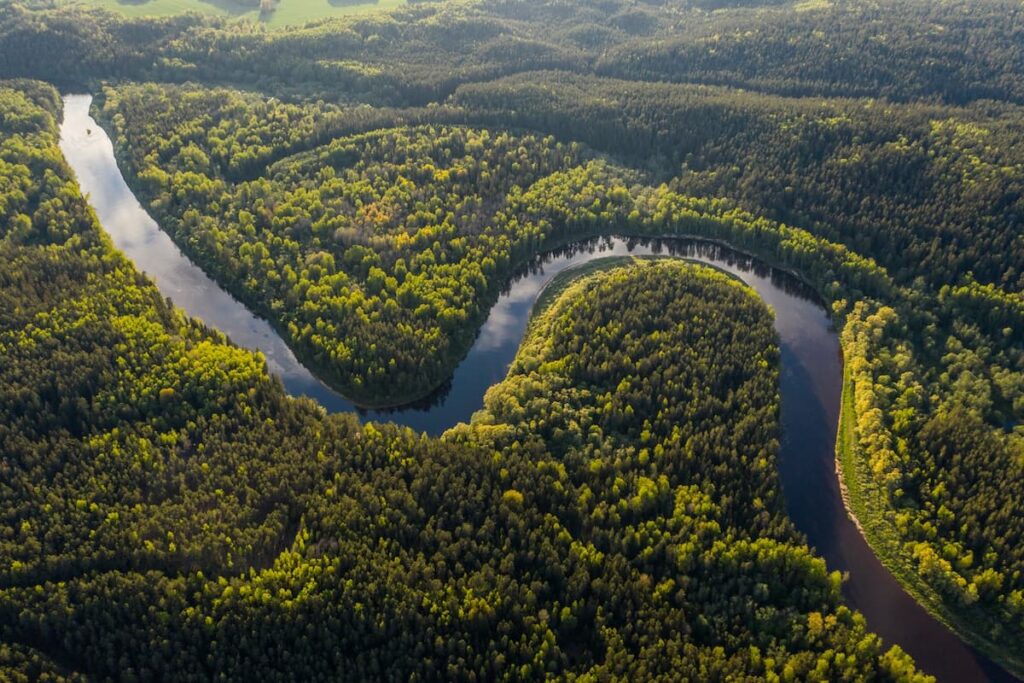The Amazon Rainforest is one of the extensive tropical rainforests located in northern South America that occupies the drainage basin of the Amazon River and its tributaries and covers an area of 2,300,000 square miles (6,000,000 square km).
Amazon forest is bounded by the Guiana Highlands in the north, Andes Mountains in the west, the Brazilian central plateau in the south, and the Atlantic Ocean in the east.
The rainforest canopy stretches to the horizon like an endless sea of green, as seen from a monitoring tower above the treetops near Manaus in the Brazilian Amazon. It appears to be a diverse and healthy ecosystem, but appearances can be deceiving. This rainforest, which contains 16,000 different tree species, is gradually drying out.
Average Temperature in The Amazon Rainforest
The average temperature in the forest has risen by 1–1.5 degrees Celsius over the last century. The dry season has increased from four to nearly five months in the last 50 years in some areas. Since 2005, severe droughts have struck three times. All of this is causing a shift in vegetation. A 2018 study discovered that trees that thrive in moist environments, such as tropical legumes of the genus Inga, are dying. Those adapted to drier climates, such as the Brazil nut tree (Bertholletia excelsa), are doing well.
Regrowing The Amazon Forest
Deserted areas that are left alone, even if only for a year, often begin a slow but continuous regrowth process. This new vegetation does not resemble a forest until it has been growing for at least 15 years. According to a 2018 study, secondary forests in the Amazon take an average of 40 years to recover 85 percent of their original biodiversity.
Climate and human activity are limiting the regrowth of large areas of forest in the Amazon. Brazil’s federal government has not imposed policies to protect secondary forests. However, the state of Para in the eastern Amazon has already made progress in regrowing and protecting forests.
Restoration versus Deforestation
The Amazon, the world’s largest rainforest, is being cut down and burned in large parts. Tree clearing has already reduced the forest’s extent from more than 6 million square kilometers in the 1970s to around 15% today; in Brazil, which contains more than half of the forest, more than 19% has vanished.
Under the 2015 Paris Agreement, global forests are expected to contribute one-quarter of the pledged mitigation. Many countries pledged to restore and reforest millions of hectares of land as part of their Nationally Determined Contribution (NDC) to help achieve the Paris Agreement’s goals. Until recently, this included Brazil, which pledged in 2015 to restore and reforest 12 million hectares, roughly the size of England.
Tropical secondary forests that grow on reclaimed land can absorb carbon up to 11 times faster than old-growth forests annually. Several factors can affect the spatial patterns of regrowth rate; one of these factors is burring a forest land, either to clear land for agriculture or other reasons.
